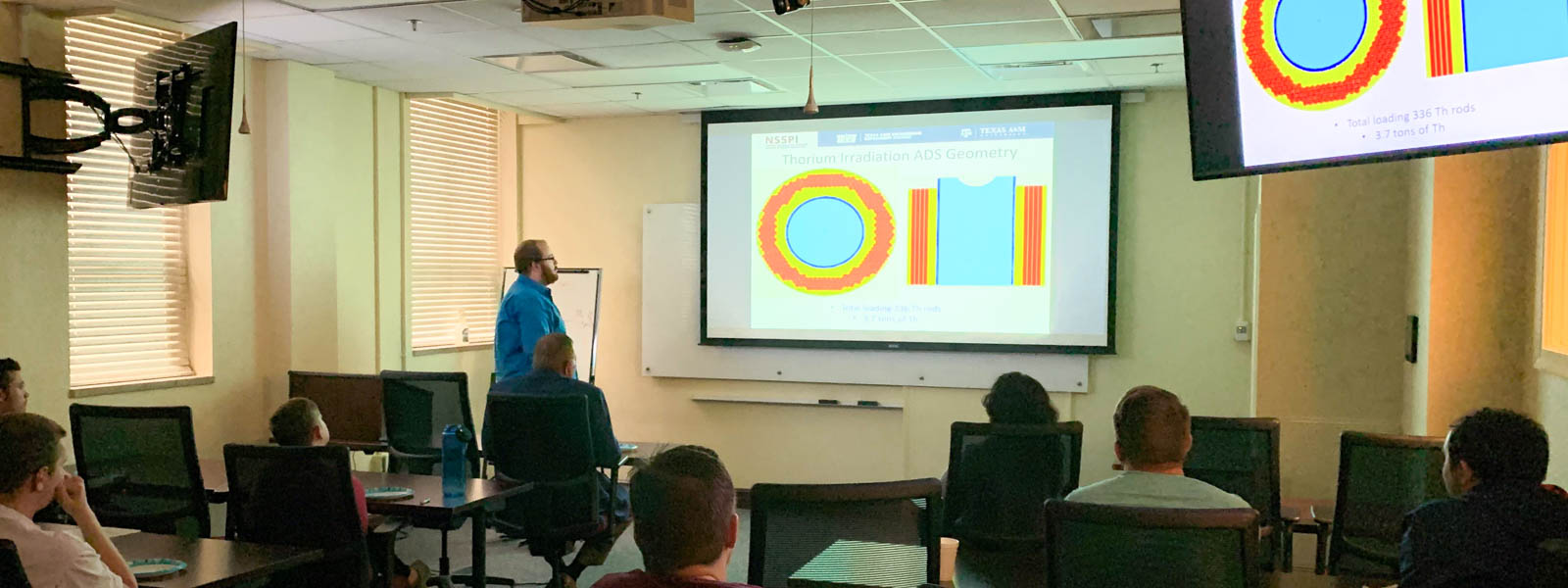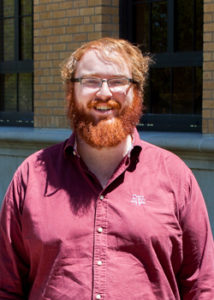Thorium is one of the earth’s most abundant heavy metals and is used in many nuclear applications, but it is often overlooked in studies of nuclear nonproliferation. Patrick O’Neal, a student with the Center for Nuclear Security Science and Policy Initiatives (NSSPI) working with Dr. Sunil Chirayath, is looking to address that oversight.

“Thorium, despite being naturally abundant, is often dismissed in nuclear nonproliferation studies,” remarked O’Neal. “One of the major questions that we wanted to answer in this work was could a country secretly produce an amount of U-233 that would raise alarms in the global community without using more than one significant quantity of thorium,” O’Neal explained. A significant quantity of nuclear material is a quantity used in nuclear materials accounting to signify a proliferation risk. The formal definition by the International Atomic Energy Agency is “the approximate amount of nuclear material for which the possibility of manufacturing a nuclear explosive device cannot be excluded.” The significant quantity is critical in determining safeguards policies and the frequency of inspections.

By comparing how different types of facilities could be used to produce uranium-233 by transmuting thorium via neutron bombardment, O’Neal hoped to determine “how feasible U-233 production is for each method” so that “we can have a better conception of proliferation risks and what is needed to curb potential clandestine fissile material production.”
The two methods of production O’Neal looked at were a heavy water reactor, using designs based on the prevalent NRX reactor, and an accelerator-driven subcritical system, which is a theoretical technology that several countries are looking to develop. He chose these facilities because they are both home-grown technologies that would not be subject to IAEA safeguards. O’Neal modelled the two facilities using Monte Carlo radiation transport code (MCNP) and performed thorium burnup calculations to find the amount of fissile material that could be produced in a two-year period. The results of his analysis suggest that both of these methods would be able to produce a troubling amount of U-233 while using much less than one significant quantity of thorium.
O’Neal has found this topic to be of real interest and the research process behind his work “very rewarding.” He emphasized, “There is importance in this type of work because it examines areas of nuclear nonproliferation that are typically not heavily focused on, and it also tests the nuclear material accountancy standards that are in place to see if they are adequate.”
O’Neal defended his thesis in November of 2019 and will be graduating with a Master of Science degree in nuclear engineering in May 2020. He plans to continue his studies by pursuing a Ph.D. in nuclear engineering at Texas A&M under the supervision of Dr. Chirayath, looking to identify forensics signatures and proliferation identifiers of foreign nuclear fuel cycles that produce plutonium and U-233, which may not be under IAEA safeguards. His Ph.D. studies are sponsored by the DOE-NNSA Inter-University Consortium for Monitoring, Technology and Verification. O’Neal previously conducted graduate research developing a methodology to perform combined analysis of nuclear facility security and safety risk for the Office of the Assistant Secretary of Defense for Nuclear Matters and mentored a team of undergraduate students developing a remote holdup monitor for the Y-12 National Security Complex. He graduated cum laude with his B.S in nuclear engineering from Texas A&M University in May of 2016.